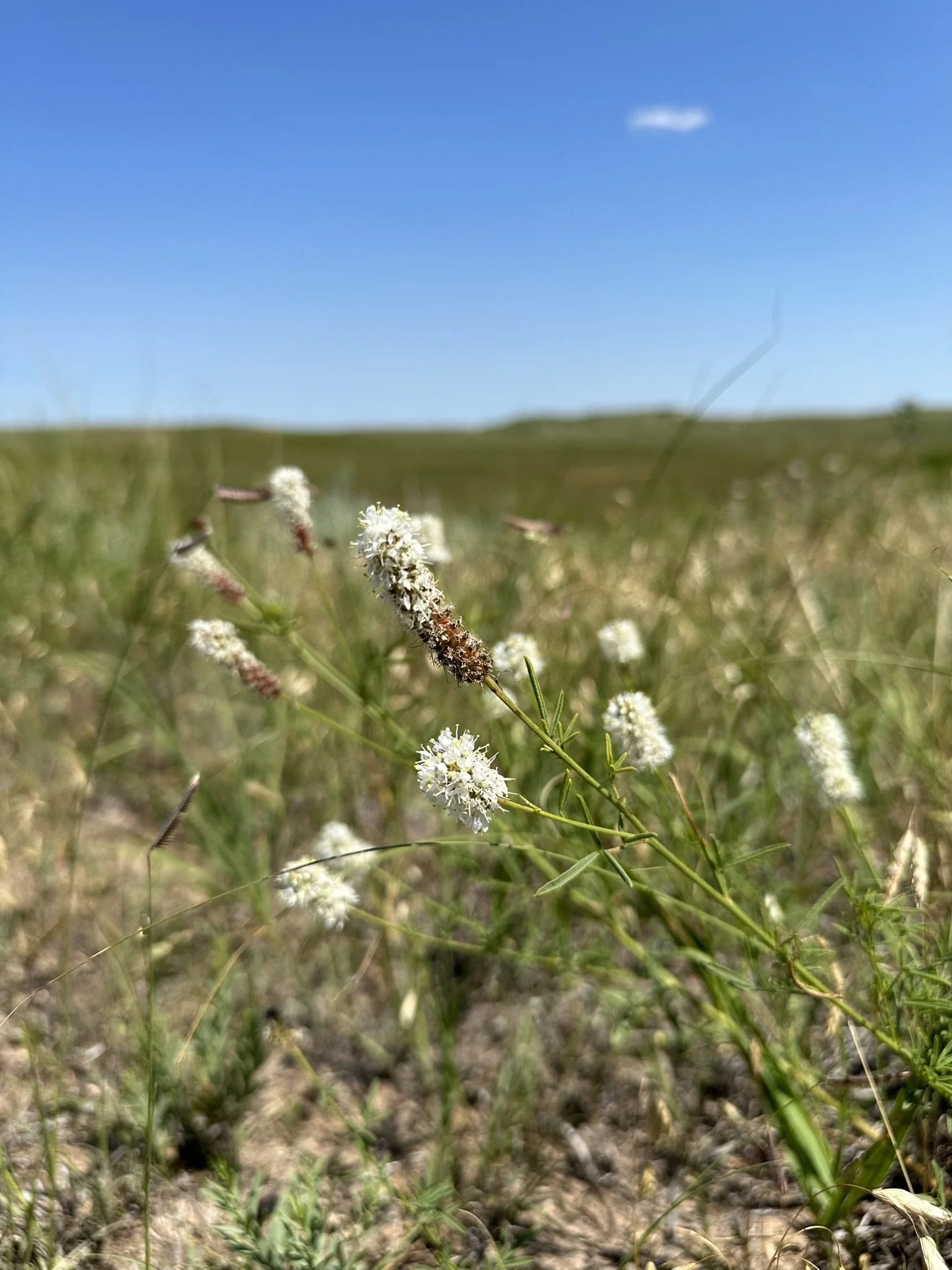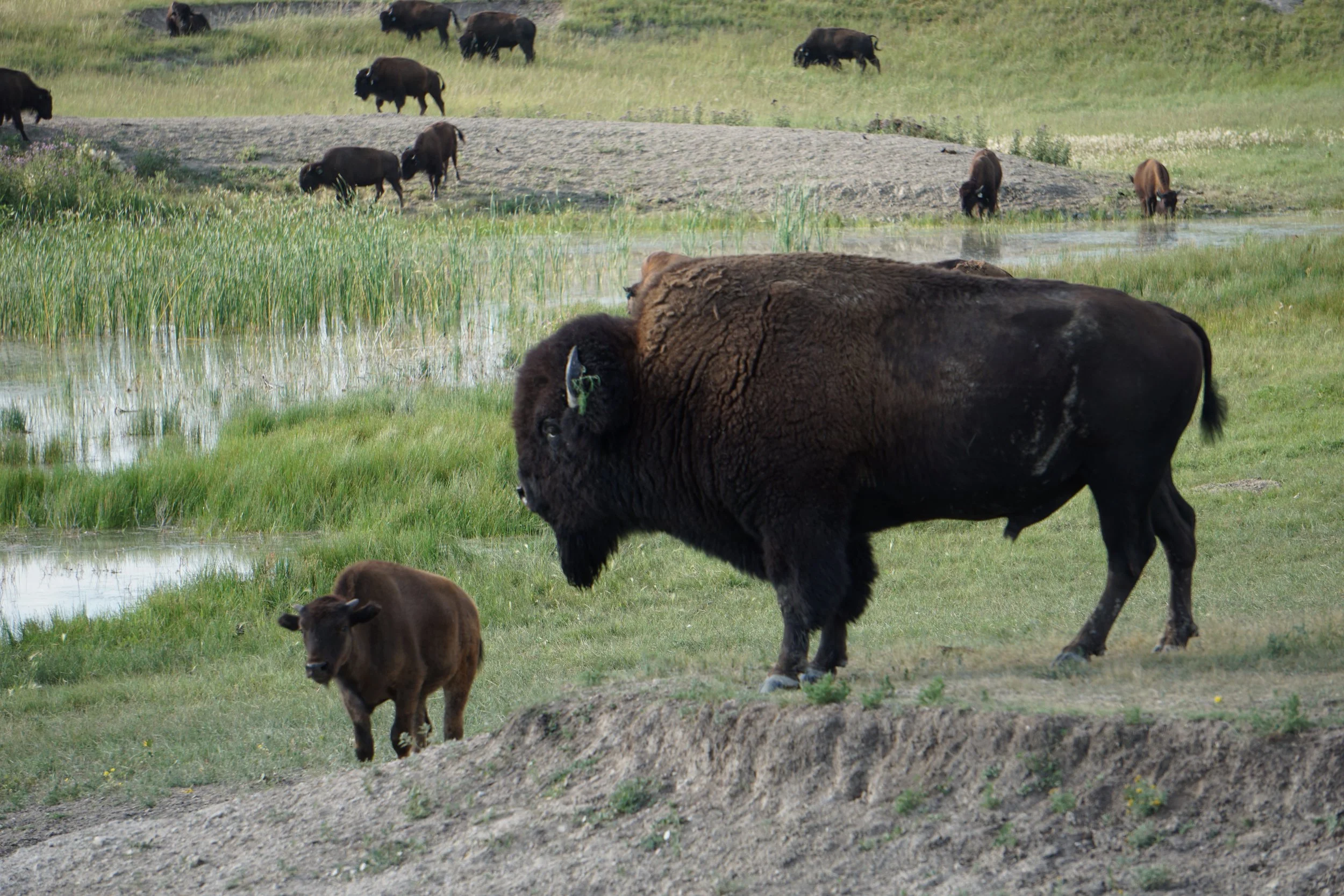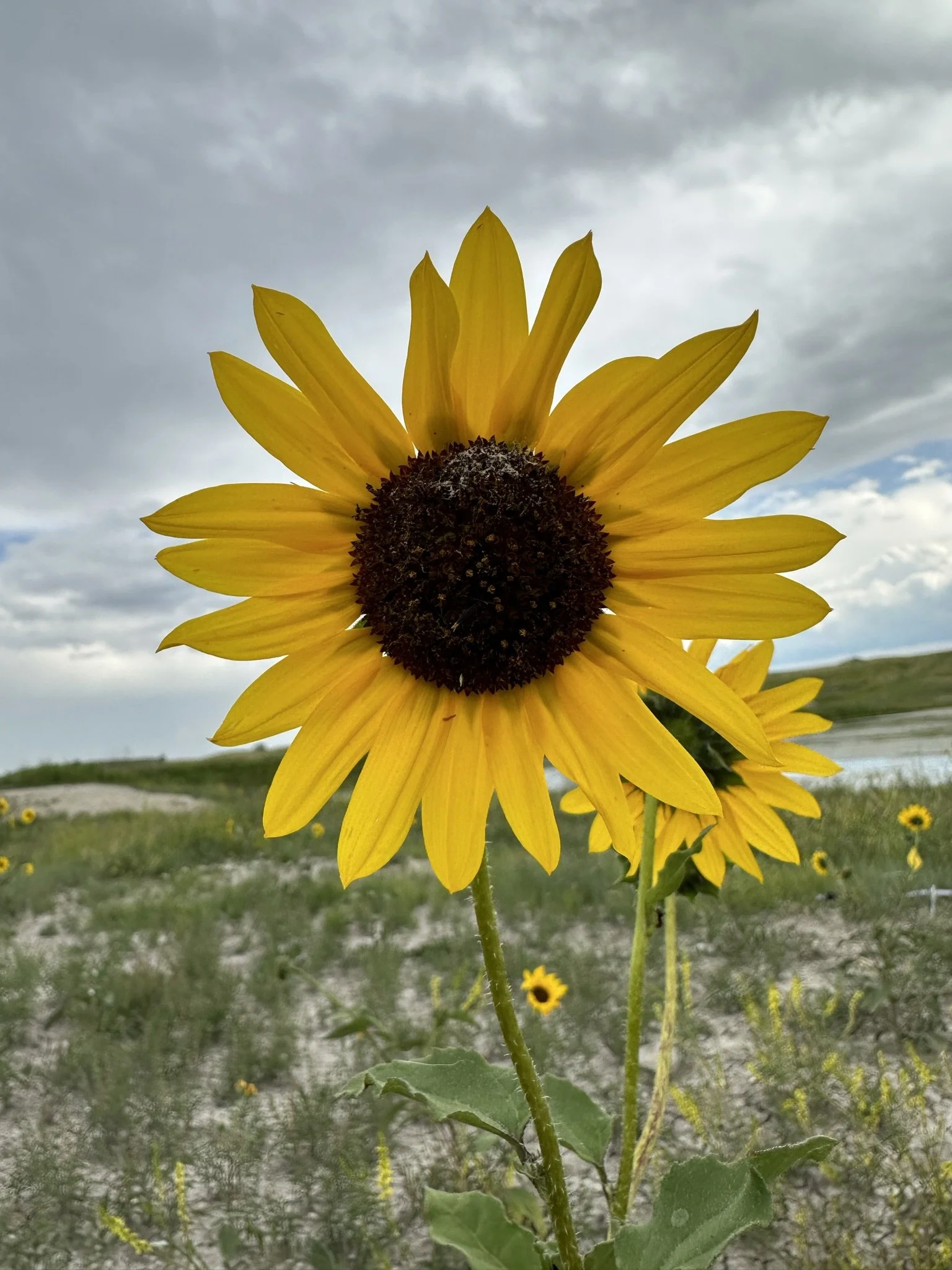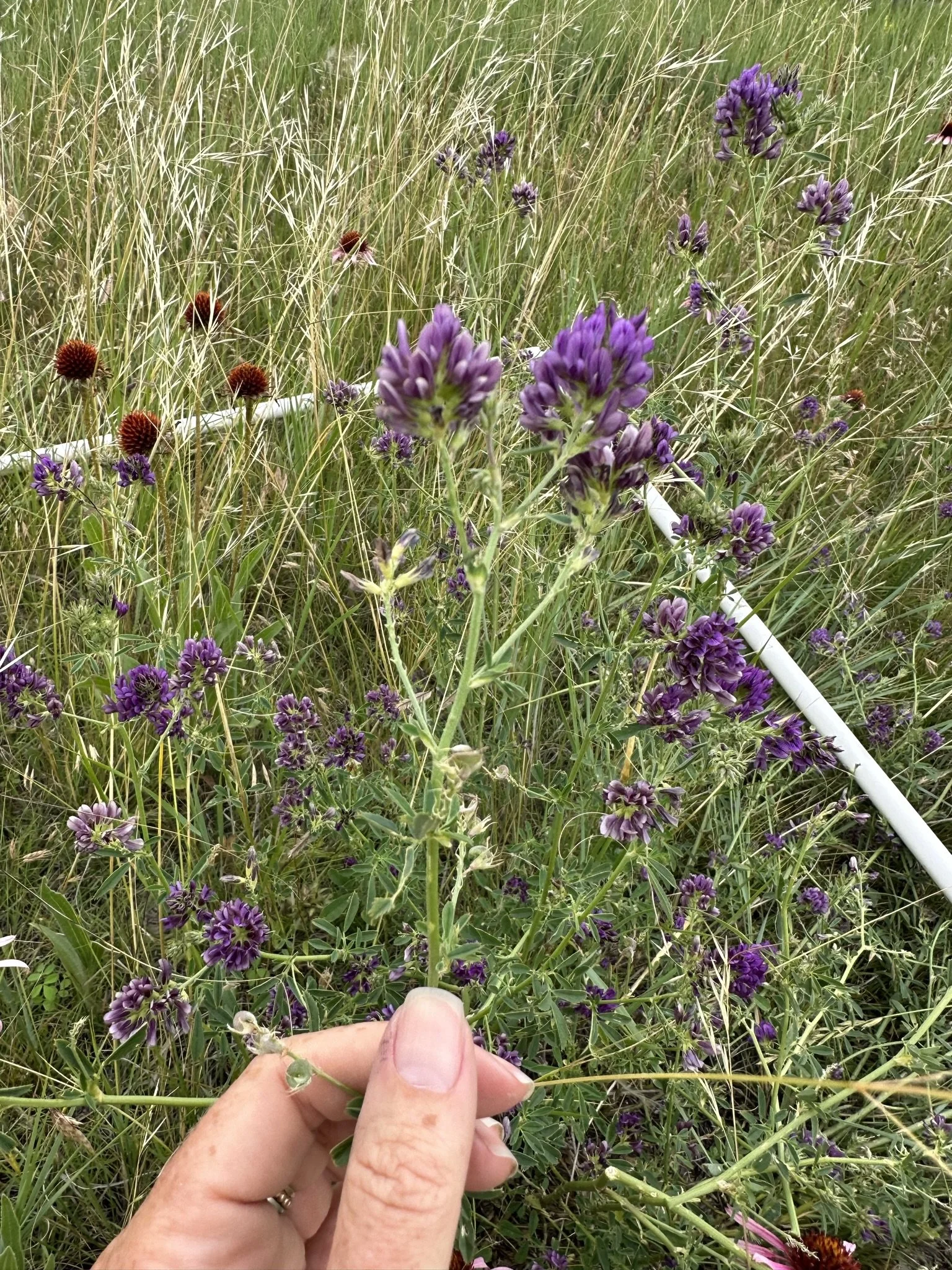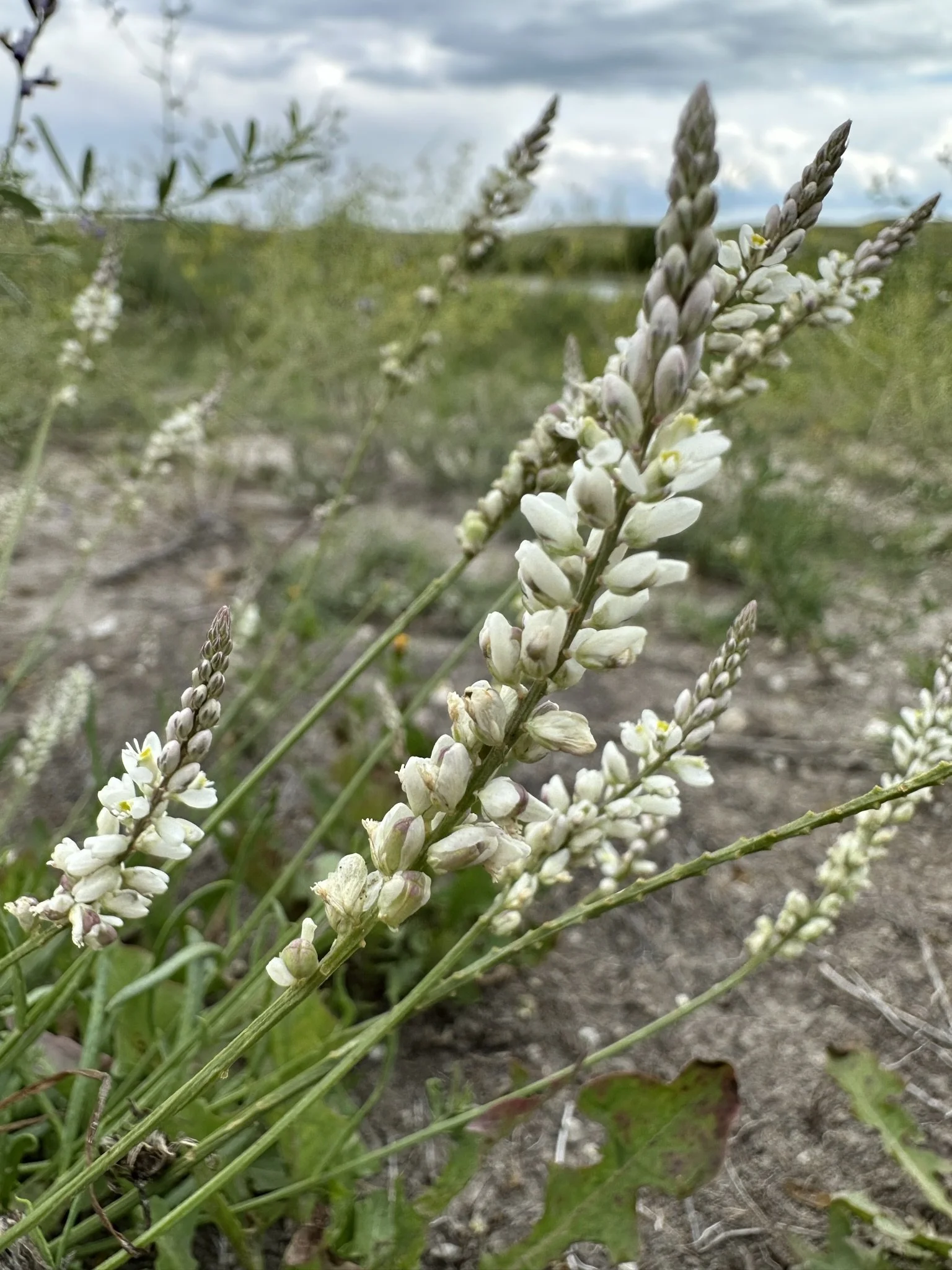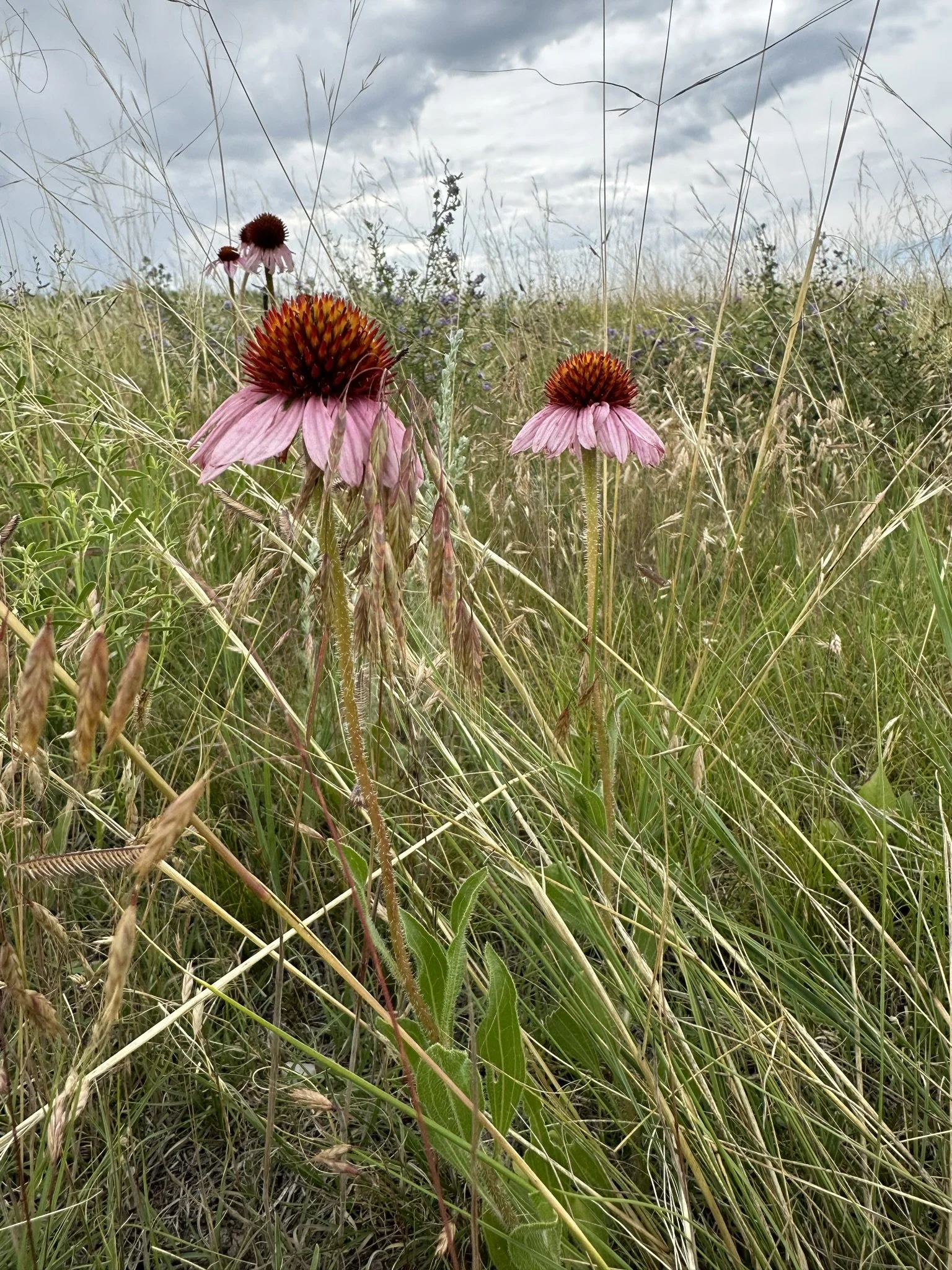Fieldnotes: Sunflower Crown for a Buffalo
I spent the better part of April through September exploring some of the most beautiful landscapes I have laid my eyes on. Every morning I stumbled out of the van, coffee in hand, Midgie at my heels, searching for my checklist of what I needed with me in the field for the day. There are two items that perennially belong on the list: my phone and my pocket notebook. I have hundreds of pages of scribbled notes, dozens of hours of voice notes, and thousands of pictures that I will continually utilize for years to come.
When I’m working in the field I’m so hyper-focused on the task at hand, I’m almost in a trance. I have a hard time recalling the thousands of novel details that I take in day-to-day. Making visual, audio, and written records is essential in being able to share clearly and correctly what I observe with our project partners, and with you!
After a bit of rest and recovery from the beautiful brutality that is nomadic fieldwork I’m excited to start piecing together a cohesive picture of what I saw and learned over the last year. I’m going to begin with sharing a few light and whimsical finds. Because it’s the season of whimsy, and that’s my current mood.
One of my favorite memories from the summer was waking up to Midgie making a low growl while pointedly staring out the van window onto the prairie at 777 Bison Ranch. I managed one eyeball open and saw a giant brown fuzz heading toward us. Having done my best for the last week and a half to put plenty of space between myself and the bison herd, I was surprised, delighted, and a little uneasy with the visitor.
I was at 777 studying bees during the bison "rut." Witnessing this powerful spectacle of nature for the second year in a row was incredible. The males who peacefully coexist in the herd for the majority of the year display their prowess through a multitude of behaviors during this time – one being head-to-head (or horn-to-groin) combat.
Some of the bulls get injured and limp off to give themselves time to heal, others just want a break from all the drama and will leave the herd for a while.
The feeling of making eye contact with a beast so ancient, so strong, and so incredibly significant to his ecosystem and his people is inexplicable.
Later that morning I would learn that I was sharing the paddock with three lone bulls, not just the one sauntering by us at sunrise.
Later that morning, Midgie and I were heading out to watch some bees in our “riparian” transect (my 4-hectar study area in a section of the ranch with a large pond) and we came across the most delightful scene. One of the bachelor buffs was on a hill above the access road itching his face on the ground. As we sped by in the side-by-side, he popped his head up, unveiling a weaved wreath of sunflowers crowning his head and spiraling around his horns. I burst out laughing at the sight – this 2,000 pound powerhouse would rather roll around in the sunflowers than spar for a spot in the hierarchy – and he looked so incredibly satisfied with his decision.
The flower was a prairie sunflower, Helianthus pauciflorus. This flower is often dismissed as “common,” as it grows just about everywhere around the Midwest. It’s, in fact, a native flower and, as I observed, an important flower for our bees. The prairie sunflowers were growing along the rim of a pond, brimming with turtles, frogs, a plethora of birds, and even beavers! A few short meters up the hill was a wash of narrow-leaved purple coneflower, Echinacea angustifolia. The rest of the transect was popping with color from scarlet globemallow (Sphaeralcea coccinea), sand lucerne (Medicago × varia), purple prairie clover (Dalea purpurea) sweetclover (Melilotus officinalis), white milkwort (Polygala alba), and more.
In my travels through the West and Midwest, always with an eye keenly focused on bees and bee habitat, I haven’t seen many landscapes that have the density of both grazing animals and flowers that 777 has. Here are a few key facts and ideas as to why:
Mimi and her crew manage over 2,400 bison on 28,000 acres,
The ranch is divided into about 20 paddocks (fenced in areas) of varying sizes and precisely managed using regenerative Holistic Management methods,
The paddock that this study transect is in is approximately 2,162 acres,
My bee surveys were done in the beginning of July, this area was last grazed in April for eight days (THIS IS KEY), so the flowers have had plenty of time to grow without grazing pressure.
Bison do not linger, they are constantly on the move and 777’s management is just helping the bison do what they would naturally do. I watched this herd glide across the landscape as a 1.5-million pound superorganism, having a significant but gentle impact on the ecosystem. The disturbance-loving prairie sunflowers were thriving in my transect where the bison have created just enough disturbance, but not too much to compact and decimate the soil. Bison move in and out of a waterway quickly, an evolutionary behavior to avoid predators.
Other places I’ve seen prairie sunflowers flowers pop-up: roadsides, cutbanks, and tilled field edges. Not exactly the safest places for bees to live, right?! Thanks to modern human development, prairie flowers and their bees are being pushed to coexist with chemicals, cars, and commotion – but not at 777. We saw a bubble of bee diversity buzzing through these flowers, thriving in the saftey of the ranch.
In just 30 minutes I observed eight different species of native bees on the 3-meter square cluster of prairie sunflowers. Among them the illusive Great Plains turret bee, Melitoma grisella!* A “chimney bee.” These bees are slightly larger than a honey bee, have a striped abdomen and an adorable round and fuzzy face. The females burrow their nests into the soil and stick tiny pebbles together (extracted from the ground to make their nest) at the entrance, creating a “chimney.” Their days are spent nest building and provisioning their eggs with pollen and nectar. The males snuggle into flowers to sleep at night, and spend their days looking for lady bees, eating pollen, and drinking nectar.
I also observed Ashmeadiella bucconis, and I had to tell you about her because her common name is TOO CUTE!! The big-cheeked mason bee (!!) is a little chonk with a fuzzy belly (for pollen collection) and a head that quite large for her body. Her big head houses impressive jaws used to cut pieces of leaves which she uses to make beds for her eggs. This small, solitary bee will build her nest in any cavity she can find in wood, soil, stems, spaces under rocks, or even in human made nooks and crannies such as fuel line tubing of a crashed airplane (Rozen and Eickwort 1997)!
Mere meters away from the sunflowers was a large swath of alfalfa, a non-native plant, completely abuzz with honey bees, Apis mellifera, from the near-by hives. The bison like the alfalfa, and I’ve watched nibble on the flowers and leave the native flowering forbs for the bees. When a system is managed for abundant biodiversity, coexistence between grazing animals and a multitude of bee species is possible.
More “Fieldnotes” will be published this winter including musings on prairie smoke flowers, whippoorwills, bison wallows, sand wasps, and Western bumblebees.
* Bee ID’s by Sarah Gardener, BGO’s project taxonomist
Rozen, J. and G. Eickwort. 1997. The Entomological Evidence. Journal of Forensic Sciences 42: 394-397.


